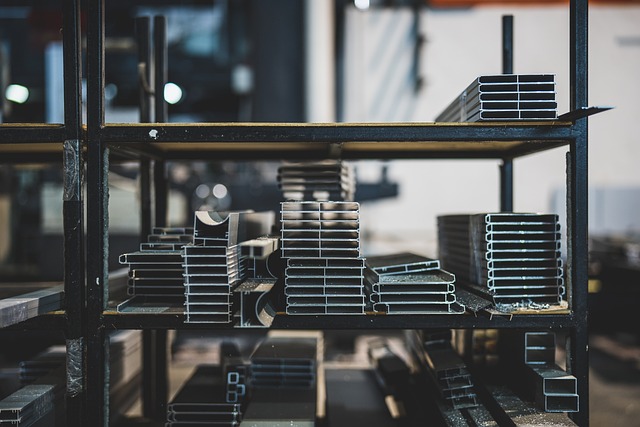Table of Contents
Steel is a versatile and durable material that plays a crucial role in modern infrastructure, shaping skyscrapers, bridges, and transportation networks, ensuring development and sustainability.
• Historical Evolution of Steel
Steel’s evolution from ancient iron forging to modern metallurgical processes is a significant historical development. The Bessemer process in the 19th century made steel mass-produced, making it affordable and widespread. Today’s techniques refine quality and sustainability, highlighting steel’s crucial role in society’s progress and infrastructure.
• Structural Integrity and Durability
Steel’s strength-to-weight ratio makes it ideal for constructing durable structures like skyscrapers and bridges. It can withstand loads without compromising integrity, and its resistance to environmental stresses enhances reliability. Steel’s flexibility allows for creative architectural designs, reducing lifecycle costs and ensuring safety.
• Versatility in Applications
One of steel’s most remarkable qualities is its versatility. From reinforcing concrete in buildings and highways to forming the framework of bridges and skyscrapers, its applications are numerous and varied. Steel is used in residential construction for building durable homes, in commercial development for constructing malls and office spaces, and in public infrastructure for creating safe and long-lasting bridges and tunnels. Furthermore, its adaptability allows for use in pre-fabricated buildings and modular construction, contributing to faster and more efficient project timelines. The ability to shape and weld steel into nearly any form makes it a go-to material for innovative architectural and engineering solutions. This flexibility is priceless for meeting the unique challenges presented by modern construction demands.
• Environmental Impact and Sustainability
The environmental impact of steel is a critical consideration in today’s eco-conscious world. Steel production does involve significant energy use and greenhouse gas emissions; however, its recyclability offers a substantial counterbalance. Recycling steel requires significantly less energy than producing new steel from raw materials, reducing the carbon footprint associated with new construction. Additionally, the industry is continually advancing in adopting cleaner technologies and improving energy efficiency in manufacturing processes. Initiatives such as using electric arc furnaces, which can utilize recycled steel scrap, are examples of strides toward more sustainable steel production. By embracing these advancements, steel can play a pivotal role in promoting sustainable development without compromising the strength or quality of modern infrastructure.
• Economic Impacts
Steel plays a vital role in the economy, supporting a wide range of industries and creating countless jobs. The steel industry itself is a significant source of employment, from the workers in steel mills to engineers and specialists involved in design and construction. Downstream industries such as construction, automotive manufacturing, and appliance production also heavily rely on steel, making it an essential component of their supply chains. The availability of high-quality steel at competitive prices can spur economic growth by enabling the development of infrastructure projects that provide long-term benefits, such as improved transportation networks and increased industrial capacity. Investments in the steel industry thus have multiplier effects, contributing to overall economic stability and growth.
• Technological Advancements in Steel Production
Technological advancements have revolutionized steel production, increasing efficiency and enhancing quality. Innovations like continuous casting streamline the production process, reducing costs and minimizing waste. The integration of artificial intelligence and machine learning in monitoring and optimizing production lines allows for real-time adjustments that improve product consistency. High-strength, low-alloy (HSLA) steels offer higher performance while using fewer raw materials, contributing to more sustainable practices. Moreover, advancements in metallurgical research continue to expand the potential applications of steel, such as in high-performance electrical steels used in energy-efficient transformers and motors. These technological strides ensure that steel remains a competitive and cutting-edge material in modern infrastructure.
• Safety Considerations and Standards
Ensuring safety in steel construction is paramount, governed by stringent standards and rigorous testing. Organizations like the American Institute of Steel Construction (AISC) establish codes that dictate safety protocols, from material specifications to structural design practices. Adherence to these standards ensures that steel structures can withstand various stresses and loads, protecting both the construction workers and the end-users. Regular inspections and maintenance protocols are essential for identifying potential weaknesses or wear, particularly in older structures. Advances in safety technologies, such as non-destructive testing methods, enable early detection of structural issues without compromising the integrity of the material. Ensuring safety through compliance with established standards is a key aspect of achieving long-lasting and reliable infrastructure.
• Innovations in Steel Design
Innovations in steel design are continuously expanding the possibilities for modern infrastructure. Architectural advancements now incorporate steel in creating highly aesthetic, functional, and sustainable buildings. For instance, the development of composite materials combines steel with other substances like concrete or fibers to enhance performance while reducing weight. Smart steel technologies, integrated with sensors, can monitor structural health in real-time, providing critical data on stress and strain to prevent failures. Additive manufacturing, or 3D printing, of steel components is another breakthrough, allowing for complex geometries that were previously unachievable with traditional methods. These innovations ensure that steel remains at the forefront of architectural and engineering marvels, meeting the ever-evolving demands of contemporary construction.
• Conclusion
In conclusion, steel is an indispensable material at the core of modern infrastructure, with a rich history that reflects its evolution and enhancements over centuries. Its structural integrity and versatility enable the creation of resilient buildings and bridges that can withstand significant stress and environmental factors. While its environmental impact is a concern, ongoing efforts in recycling and cleaner production processes are making steel a more sustainable choice. The economic significance of the steel industry cannot be overstated, as it supports numerous sectors and contributes to global economic growth. Technological advancements and innovations in design continue to push the boundaries of what is achievable with steel, ensuring its relevance in the future development landscape. Adherence to stringent safety standards further bolsters its reliability, making steel a cornerstone of safe and stable construction. As we look ahead, the continued evolution of steel promises to shape a progressive and sustainable world, forging the foundations of tomorrow’s infrastructure.
